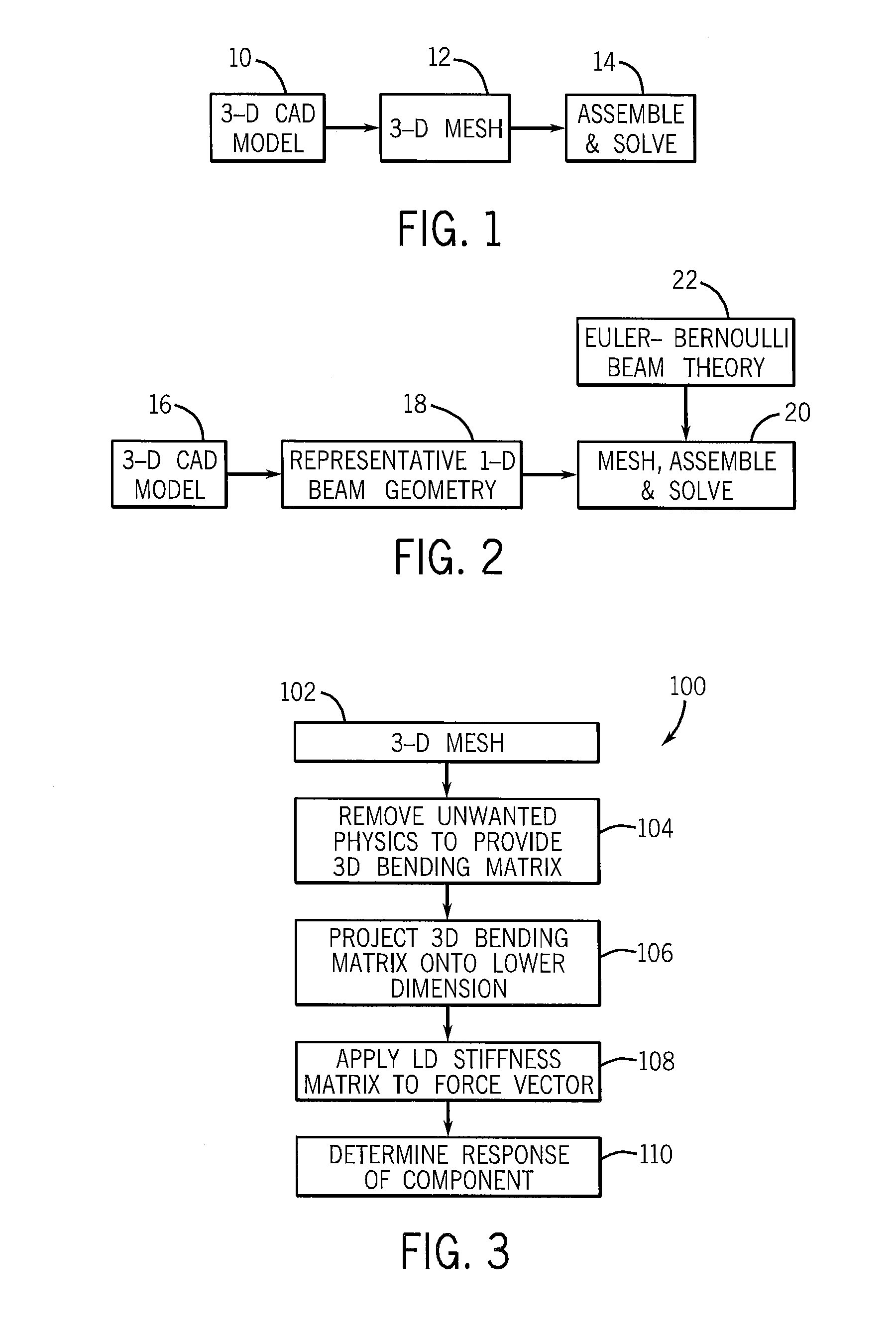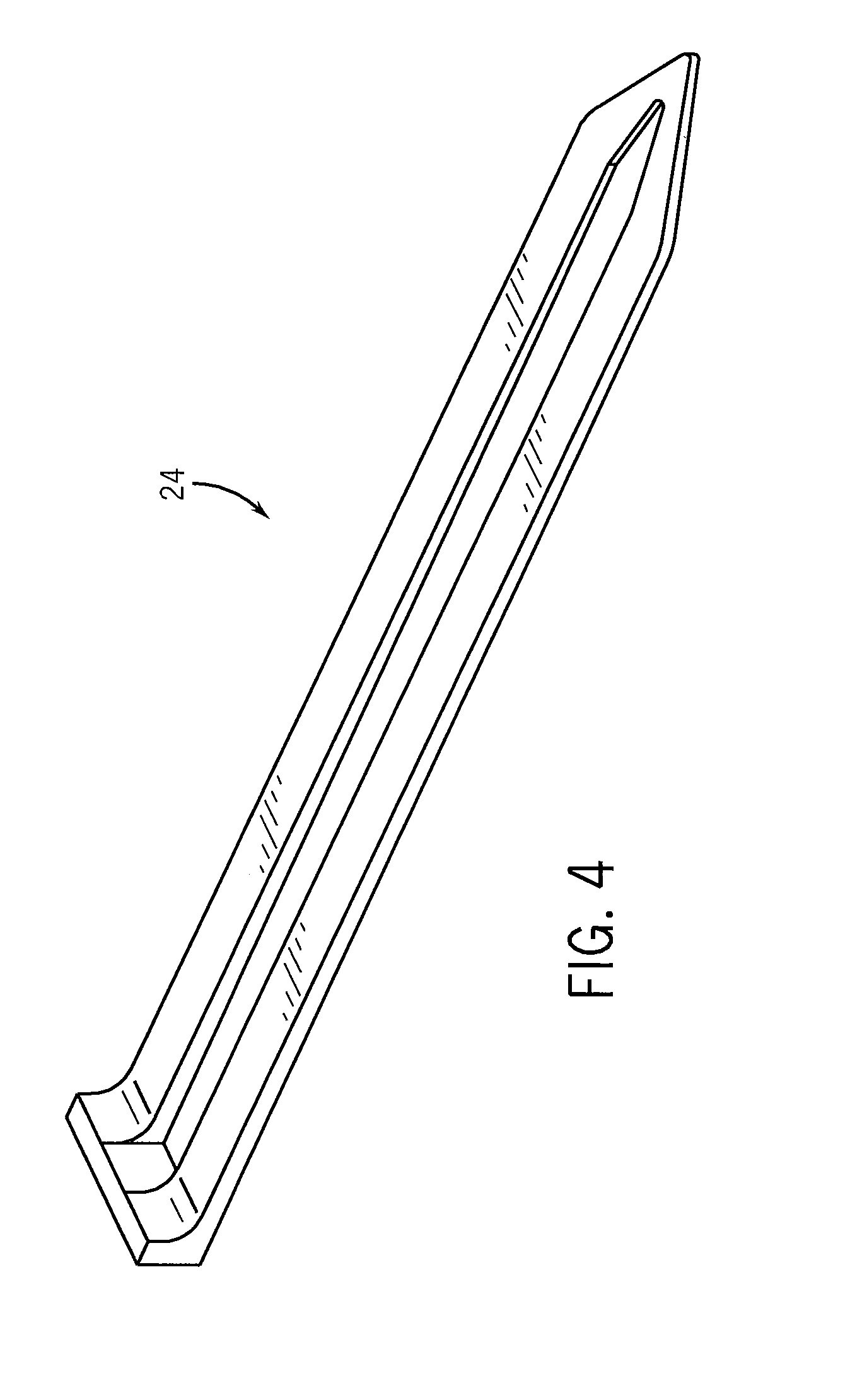Method And System For Analysis And Shape Optimization Of Physical Structures Using A Computerized Algebraic Dual Representation Implicit Dimensional Reduction
a computerized algebraic and algebraic dual representation technology, applied in multi-objective optimisation, instruments, cad techniques, etc., can solve the problems of less practical 3d computational processes, slender evolving geometry, and often thickened models in that area
- Summary
- Abstract
- Description
- Claims
- Application Information
AI Technical Summary
Problems solved by technology
Method used
Image
Examples
Embodiment Construction
[0027]The present invention is generally directed to a computerized, iterative process for optimizing the shape of physical structures based on the simulated response of a computerized model of the physical structures to a simulated event, e.g., point load. While the invention is not so limited, the invention will be described with respect to the optimization of a microcantilever. As will be appreciated, the present invention is particularly applicable for the optimization of high aspect ratio structures, such as beams and other “thin” structures or structures having “thin” portions.
[0028]As will explained in greater detail hereinafter, the present invention provides a dual-representation structural analysis process that offers the geometric flexibility and generality of 3D FEA and the computational efficiency and accuracy of 1D beam analysis. In general, the inventive process involves the capturing of the geometry of the structure via an arbitrary 3D finite element mesh and the cap...
PUM
 Login to View More
Login to View More Abstract
Description
Claims
Application Information
 Login to View More
Login to View More - R&D
- Intellectual Property
- Life Sciences
- Materials
- Tech Scout
- Unparalleled Data Quality
- Higher Quality Content
- 60% Fewer Hallucinations
Browse by: Latest US Patents, China's latest patents, Technical Efficacy Thesaurus, Application Domain, Technology Topic, Popular Technical Reports.
© 2025 PatSnap. All rights reserved.Legal|Privacy policy|Modern Slavery Act Transparency Statement|Sitemap|About US| Contact US: help@patsnap.com



